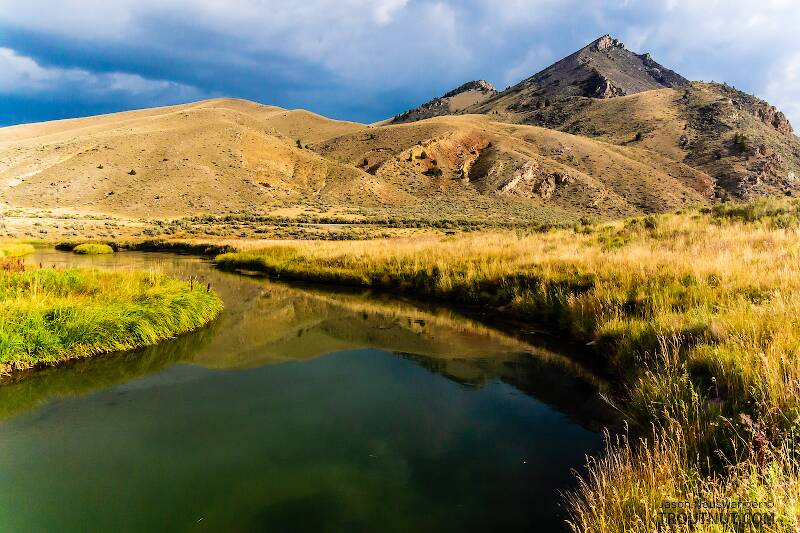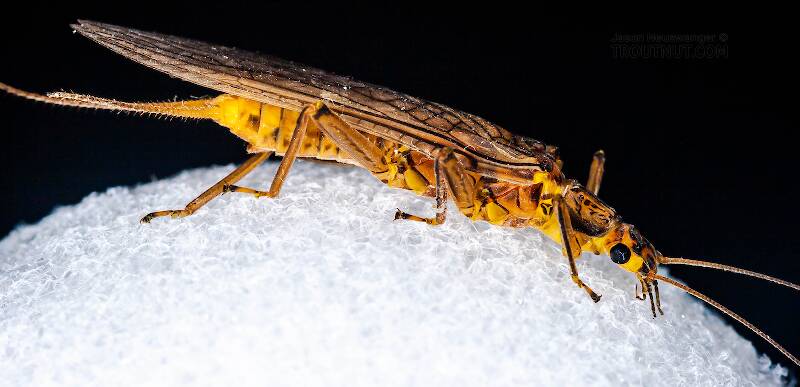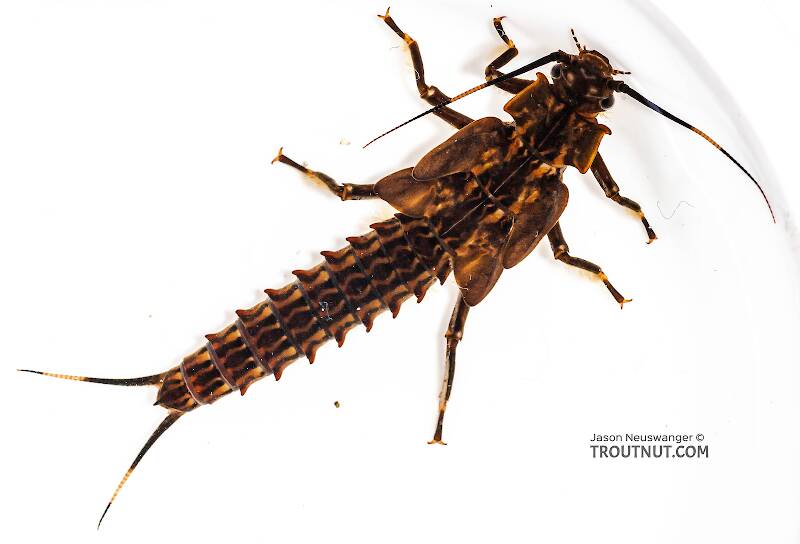
Blue-winged Olives
Baetis
Tiny Baetis mayflies are perhaps the most commonly encountered and imitated by anglers on all American trout streams due to their great abundance, widespread distribution, and trout-friendly emergence habits.
Featured on the forum


Troutnut is a project started in 2003 by salmonid ecologist Jason "Troutnut" Neuswanger to help anglers and
fly tyers unabashedly embrace the entomological side of the sport. Learn more about Troutnut or
support the project for an enhanced experience here.
Stoneflies
Though less prolific than mayflies and caddisflies, many stonefly species make up for in size what they lack in numbers. Because they emerge by crawling out of the water on land, the hatching adults are not eaten for trout, but their large nymphs are welcome food year-round. In the Western states, where stoneflies are most prolific, trout sometimes feed selectively on the egg-laying adults as they return to the water.
This common name refers to only one order. Click its scientific name to learn more.
Insect Order Plecoptera
These are pretty much always called Stoneflies.
Stoneflies are the largest of the three main types of trout stream insects. While far less important than caddis and mayflies in the East and Midwest where they are mostly thought of as handy nymphs to imitate when nothing much is hatching, it's in the West where this order comes into its own. They can cause outstanding fishing, and on many rivers their hatches are the premier events of the season.
The year begins with the little dark stoneflies of the Capniidae, Leuctridae, and Nemouridae families as some of the only active aquatic insects available to trout. As the year progresses into late Winter and early Spring, the Large Springflies of the Perlodidae family in the West and Willowflies of the Taeniopterygidae are sometimes the first dry-fly insects of the season. When Spring fully arrives, so do the most significant stoneflies for the angler - the gigantic Pteronarcyidae Salmonflies of western legend. The large Golden Stones of the Perlidae supplement these hatches and are more common across the country. Summer brings on significant hatches of the Little Yellow Stones of the Perlodidae family and the little yellow or green Chloroperlidae flies that are common sights.
The year begins with the little dark stoneflies of the Capniidae, Leuctridae, and Nemouridae families as some of the only active aquatic insects available to trout. As the year progresses into late Winter and early Spring, the Large Springflies of the Perlodidae family in the West and Willowflies of the Taeniopterygidae are sometimes the first dry-fly insects of the season. When Spring fully arrives, so do the most significant stoneflies for the angler - the gigantic Pteronarcyidae Salmonflies of western legend. The large Golden Stones of the Perlidae supplement these hatches and are more common across the country. Summer brings on significant hatches of the Little Yellow Stones of the Perlodidae family and the little yellow or green Chloroperlidae flies that are common sights.
See 173 more specimens...



